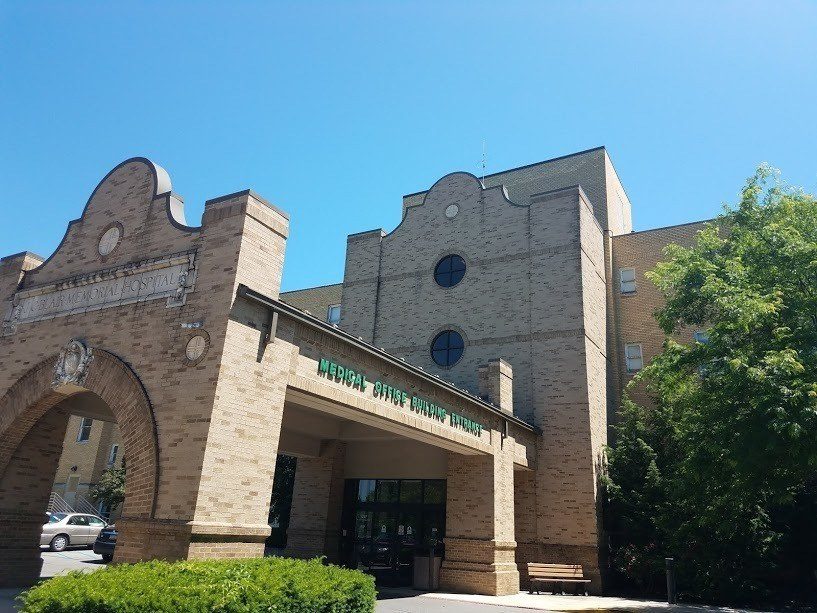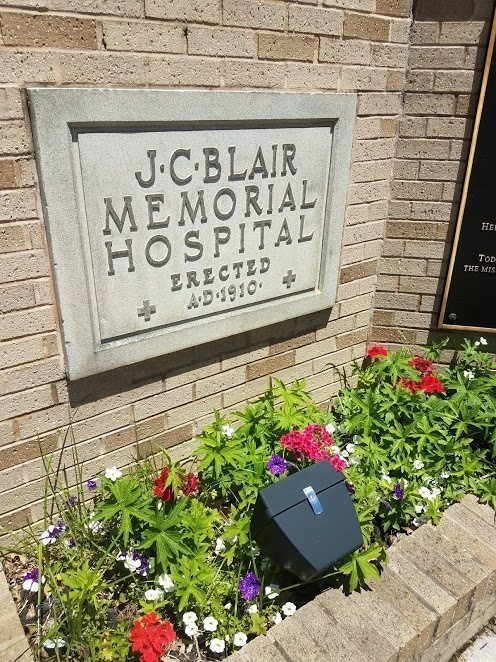
A new future for healthcare in Huntingdon
How J.C Blair is addressing the national challenges on rural health facilities
By EMMA HANNAN
A familiar situation
In a Huntingdon Chamber of Commerce event the morning of June 6, 2018, J.C Blair Hospital CEO Adam Dimm repeatedly assured the Huntingdon community that, come what may, the Hospital and Huntingdon were in “good hands”.
J.C Blair Hospital, the only hospital in the immediate service area, faces acquisition before the end of the month, and the situation is reminiscent of one a few years ago to many Huntingdon residents. “No one was willing to risk losing money in 2012 and 2013,” Dimm reminds the audience in his Wednesday morning presentation, referring to the closure J.C Blair would have faced had Pinnacle Health not taken an “enormous risk” on the hospital. In 2018, however, the impending acquisition gives J.C Blair more control than in the last acquisition.
The plan, according to Dimm, was always for a Pinnacle Health affiliation to be an intermediate step to another larger acquisition. Although the details of the ultimate partnership have changed since the initial contract, next steps for J.C Blair are still going according to the original plan. No partner will be named until July 1, 2018.

A national challenge
Regardless of the eventual partner, which will officially merge with J.C Blair in October 2018, J.C Blair administration has a comprehensive plan to improve value to both individual patients and the whole community. CEO Dimm explained that the issues J.C Blair is facing are not unique to the Hospital or even to Huntingdon County, and the need for a merger is not a result of this particular hospital. Rural healthcare in any state is facing financial pressure, and J.C Blair is committing to shaping the nationwide future of rural healthcare through a series of key innovations.
Of the 46 rural healthcare providers in Pennsylvania, half are operating with negative margins, meaning that they do not earn a profit. Dimm attributes this characteristic in part to the fee-for-service model, which incentivizes hospitals to have as many patients being treated inside the hospital as possible. Financially, this model is not beneficial to the patient nor the provider in rural settings with low volumes of patients.
“When you don’t have volume in a rural community, you don’t have revenue to cover your costs,” Dimm explains. Any hospital has a certain amount of fixed expenses to make services available to patients, but when there are not enough patients to cover those expenses, profit margins suffer.
Despite these setbacks, J.C Blair has been able to accomplish a lot since the initial Pinnacle acquisition years ago. Since 2016, for example, the number of walk-in visits at the J.C Blair Convenient Care Center has far surpassed the amount of Emergency Room visits, meaning that the Hospital has been able to address the health needs of community members in way that is more affordable to them at the Convenient Care Center. The J.C Blair Cath Lab has also been a phenomenal source of success for the health system, serving over 610 patients since May 31, 2017. The theme of higher value in patient services will continue as J.C Blair prepares to merge with a larger partner.

What will healthcare in Huntingdon look like after the merger?
J.C Blair is among the first rural hospitals in the nation to implement a value-focused model instead of a volume-focused model to care for patients. Dimm emphasized the importance of understanding the socioeconomic factors that determine a patient’s or community’s health–including education, employment, income, family and social support, and safety–and then implementing systems that will help address barriers that Huntingdon residents face in these areas.
The Hospital’s Transformation Vision includes steps that J.C Blair will take to better meet the needs of Huntingdon residents. Community Health Workers will overcome some barriers to healthcare access that patients currently face, and will broaden the population that healthcare professionals will be able to serve. Dimm also plans to utilize the County’s paramedical professionals to fill some roles previously filled by home-visiting registered nurses.
Technology plays a large role in the Transformation Vision. J.C Blair hopes to expand telehealth programs to bridge the gap between healthcare professionals and patients, as well as to provide on-line educational opportunities to well patients. Technology will serve as one of many “touchpoints” the Hospital hopes to establish throughout the community to give more options for people to be proactive about their health.
Dimm repeatedly assures us that the community can be very confident about the changes ahead. The new model will not only benefit J.C Blair and its new partner affiliate as a business, but will drastically improve outcomes for each patient and the community at large. The Hospital hopes to eventually make health services so accessible in Huntingdon that people will have no choice but to go to those services as soon as it occurs to them to do so. With new innovations that are already underway, such as the Population Health Leadership Team, the Integrated Care Management Team, advocacy for high-speed broadband, collaboration with Juniata College students and an online health portal (launching August 2018), we can see the commitment that the Hospital is making to the residents of Huntingdon County.


Responses